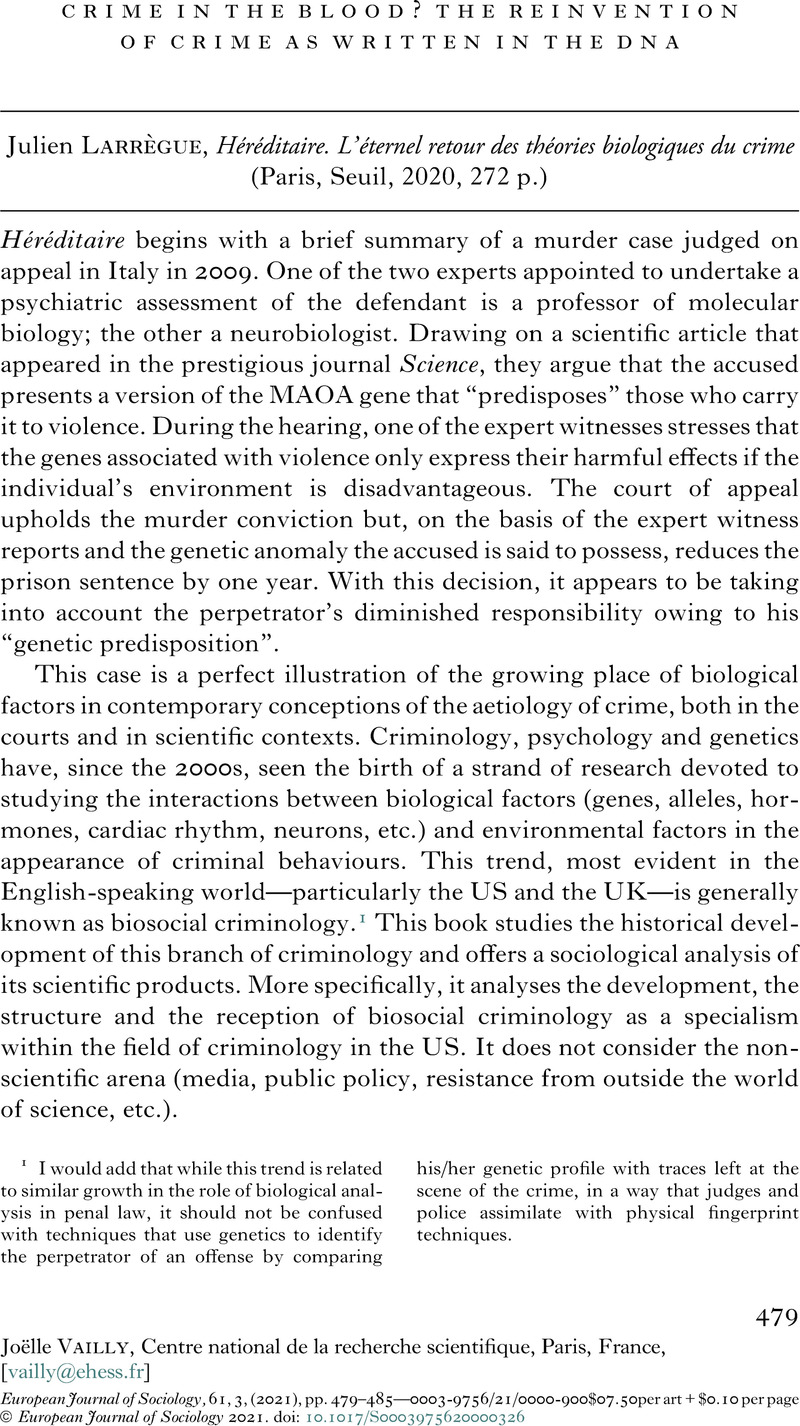No CrossRef data available.
Published online by Cambridge University Press: 26 March 2021

1 I would add that while this trend is related to similar growth in the role of biological analysis in penal law, it should not be confused with techniques that use genetics to identify the perpetrator of an offense by comparing his/her genetic profile with traces left at the scene of the crime, in a way that judges and police assimilate with physical fingerprint techniques.
2 The social hierarchy of US universities in fact correlates with the percentage of sociologists in the teaching faculty of criminology departments.
3 Even though the book shows that biosocial criminology is not strictly speaking a “right-wing” science.
4 Candidate genes are thought to play a part in the characteristic under analysis, through modification of their functioning.
5 In the US, between 2011 and 2015 the number of criminal court decisions citing neuroscience rose from 100 to 400 per year; between 2007 and 2011 there were 33 criminal cases in which judges made use of data from behavioural genetics.